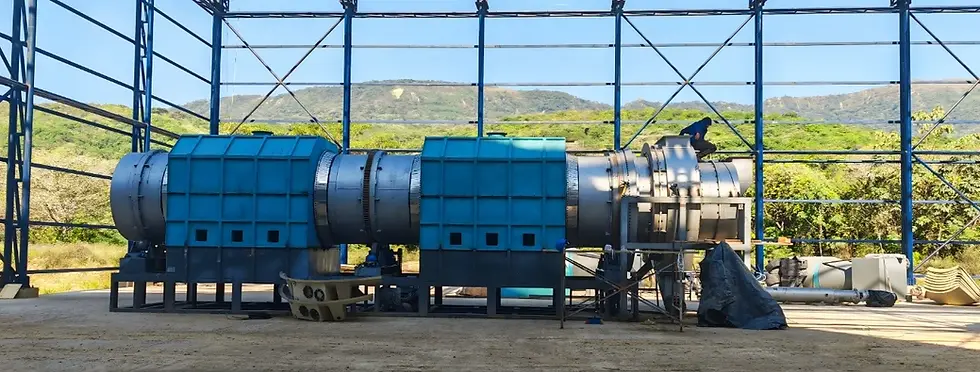Pelletizing and Packaging Solutions for Biochar End-Products
- lee784287
- 7月21日
- 讀畢需時 2 分鐘
The transformation of raw biochar into a commercially viable form involves more than just pyrolysis. To meet the operational demands of industrial users and facilitate end-user convenience, pelletizing and packaging solutions have become essential post-processing steps. These downstream technologies enhance biochar's marketability by improving its density, stability, and handling properties.
Pelletizing Process for Biochar
Pelletizing is a mechanical compression process where fine biochar particles are compacted into uniformly sized pellets. This is achieved using specialized equipment such as a charcoal briquetting machine, which applies pressure and, in some cases, heat, to form dense, cylindrical pellets. The compact form minimizes dust dispersion and improves volumetric efficiency during transport and storage.
Biochar's physical properties—such as particle size, moisture content, and porosity—directly influence pellet integrity. An optimal moisture content of 10–12% is typically required to ensure effective binding without introducing excessive steam or degradation. Some systems incorporate a binder, such as starch or molasses, to improve mechanical strength, especially when the feedstock has low lignin content.

Advantages of Pelletized Biochar
Pelletized biochar is easier to handle and transport. Its uniform size allows for more predictable application in soil enhancement, filtration media, and carbon sequestration projects. The densification also reduces the overall storage footprint, an important factor for distributors and retailers operating within constrained warehousing conditions.
In industrial combustion settings, pellets offer consistent combustion characteristics compared to loose biochar. This uniformity supports efficient fuel dosing in biomass boilers and gasifiers, where precision feed is critical to maintaining energy output and reducing emissions.
Role of the Charcoal Briquetting Machine
The charcoal briquetting machine is a central component in converting fine biochar powder into usable formats. It compresses loose material through a mold system, producing shapes such as cylinders, hexagons, or pillow forms, depending on the die configuration. Machines may be hydraulic or mechanical, with throughput capacities ranging from a few hundred kilograms to several tons per hour.
Advanced models feature temperature control systems, variable-speed drives, and integrated mixers to ensure consistent quality across batches. In automated lines, the briquetting machine is often integrated with conveyors, sieving units, and drying tunnels to create a seamless production workflow.
Packaging Solutions
Once pelletized, biochar must be packaged in a manner that preserves quality and facilitates distribution. Packaging formats vary from small retail-ready bags (5–25 kg) to bulk sacks and containerized loads. Barrier-layered plastic bags are commonly used to minimize moisture ingress and prevent oxidation.
Automated bagging systems enhance operational efficiency by integrating weighing, filling, sealing, and labeling processes. For large-scale producers, robotic palletizing systems may be employed to streamline logistics and ensure consistent load integrity during transportation.
Conclusion
Efficient pelletizing and packaging are vital for converting raw biochar into high-value, market-ready products. The use of a charcoal briquetting machine ensures uniform compaction, while advanced packaging solutions protect product quality throughout the supply chain. These post-processing innovations not only elevate the commercial appeal of biochar but also enable broader adoption across agricultural, industrial, and environmental sectors.



留言